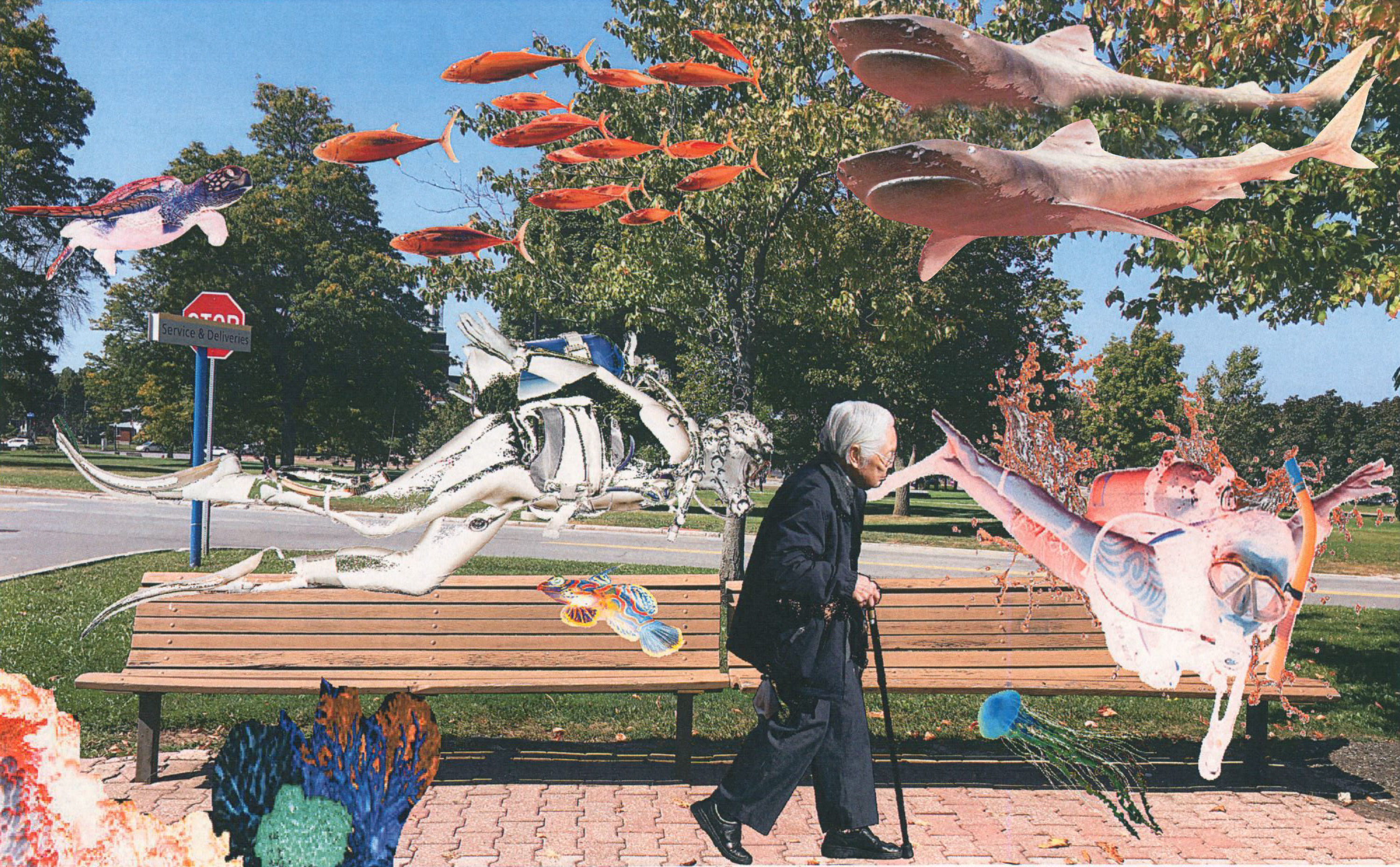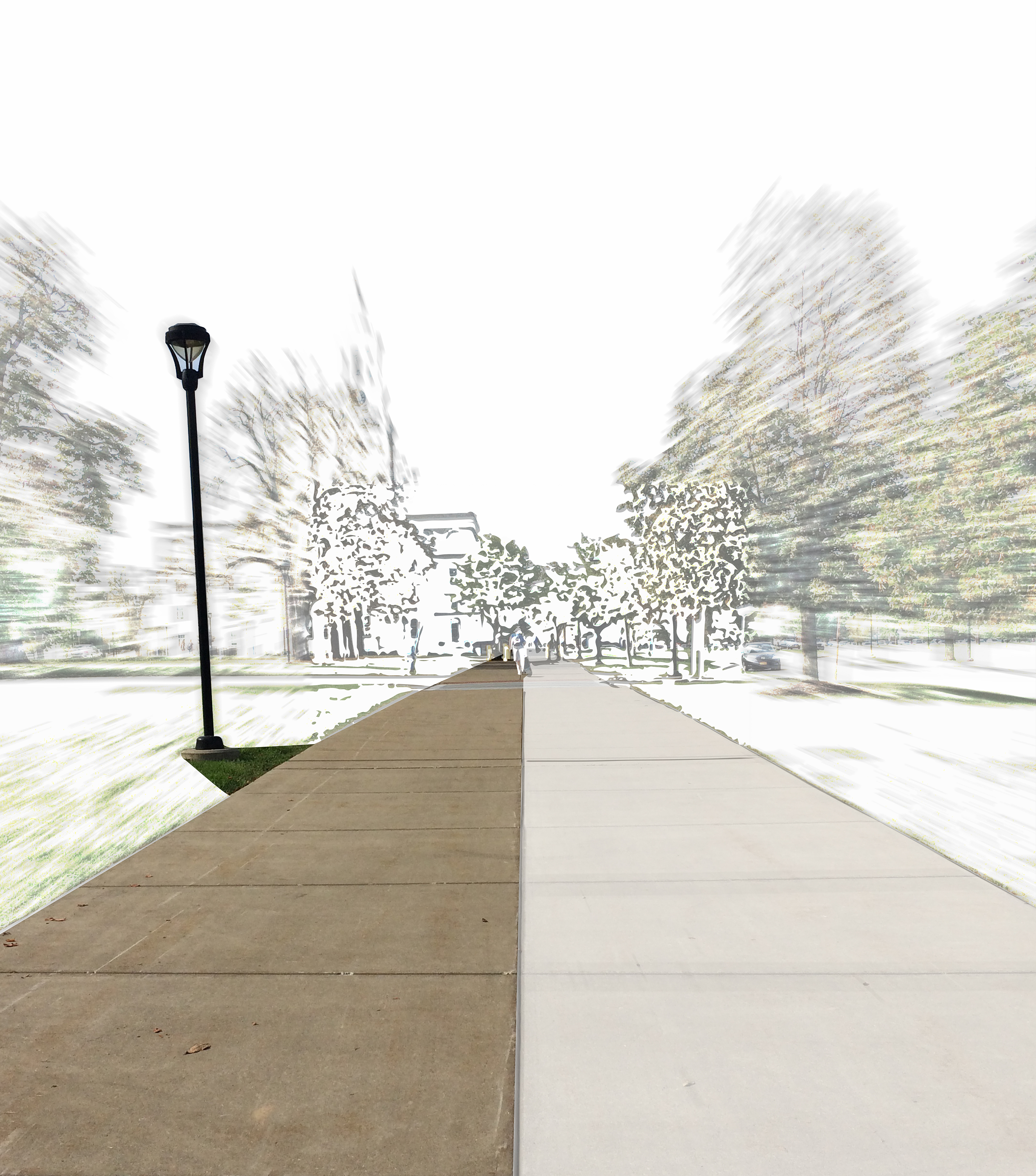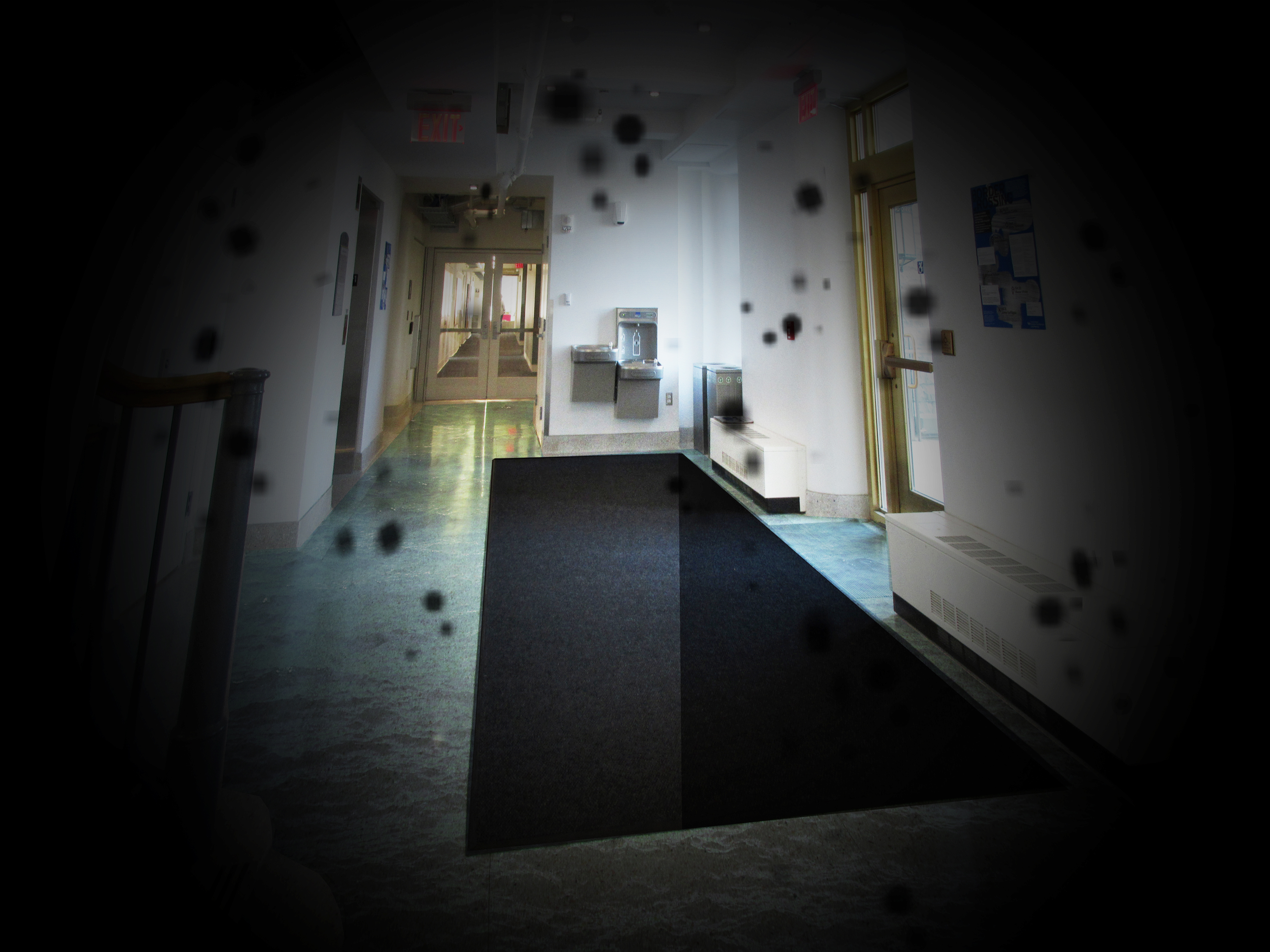How can designers
Multiply Perspectives
through which we design?
—
In architectural education and practice, the default user is generally assumed to be a white, able-bodied, youthful, cisgendered male with minimal consideration for non-conforming bodies. In a society where the cultural constructions of gender and disability are being re-evaluated, the normative assumptions embedded within architecture also need to be interrogated. The process of aging provides a lens through which to extend design subjectivity beyond norms and to advocate for the consideration of diverse human embodiments in the design of the built environment.
The Multiply Perspectives theme collects together student work exploring how various abilities, perceptions and social conditions shape aging bodies. Through the exercise Embodying Umwelts, students researched how a specific aging-associated condition affects a person’s lived experience and interpreted possible perceptual worlds through experimental representations. For Elderly Entourage, students generated entourage figures of older adults as a means of advocating for their inclusion and consideration within the design process. Within the discipline of architecture we need to continually develop tools and methods for engaging non-normative embodiments in the design process and multiplying the perspectives through which we operate as designers.
The Multiply Perspectives theme collects together student work exploring how various abilities, perceptions and social conditions shape aging bodies. Through the exercise Embodying Umwelts, students researched how a specific aging-associated condition affects a person’s lived experience and interpreted possible perceptual worlds through experimental representations. For Elderly Entourage, students generated entourage figures of older adults as a means of advocating for their inclusion and consideration within the design process. Within the discipline of architecture we need to continually develop tools and methods for engaging non-normative embodiments in the design process and multiplying the perspectives through which we operate as designers.
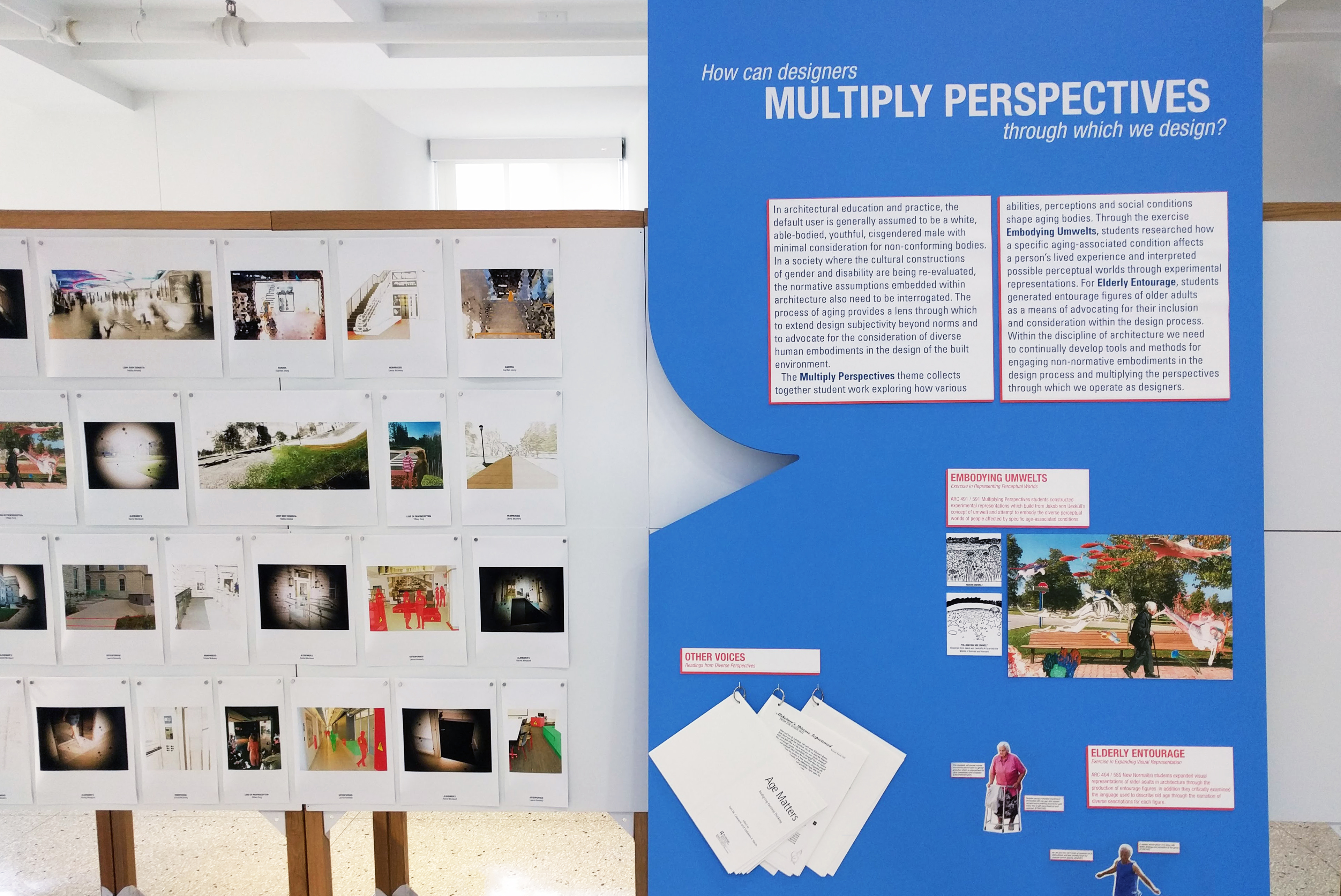
Ex.1 Elderly Entourage
The word representation can be understood as both an act of depicting a subject and of advocating on behalf of a subject. The in-class exercise Elderly Entourage asked: How can we use architectural representation to advocate for and visually include older adults within architectural practice?
Architectural entourage have become increasingly available online but the vast majority depict able-bodied, fashionable, white people. These youthful figures get used around the world in architectural renderings, setting a precedent for who belongs and who does not in these future built environments. Through the production of entourage figures depicting the manifold activities and embodiments of senior citizens, students advocated for the inclusion of older adults into the systems of architectural production. Furthermore, they critically examined the often derogatory language that accompany old age through the narration of varied descriptions for each figure.
Work by ARC 404/505 New Normal(s) seminar students: Alexa Russo, Alexandra Sheehan, Amrutha Boban, Andrea Gonzalez, Arisha Shahid, Emma McAneny, Euychan Jeong, Jarrett Trudeau, Kelsey Habla, Lauren Kennedy, Ruchita Chandsarkar, Ryan Olsen
Elderly Entourage available for academic use at www.elderlyentourage.com
Architectural entourage have become increasingly available online but the vast majority depict able-bodied, fashionable, white people. These youthful figures get used around the world in architectural renderings, setting a precedent for who belongs and who does not in these future built environments. Through the production of entourage figures depicting the manifold activities and embodiments of senior citizens, students advocated for the inclusion of older adults into the systems of architectural production. Furthermore, they critically examined the often derogatory language that accompany old age through the narration of varied descriptions for each figure.
Work by ARC 404/505 New Normal(s) seminar students: Alexa Russo, Alexandra Sheehan, Amrutha Boban, Andrea Gonzalez, Arisha Shahid, Emma McAneny, Euychan Jeong, Jarrett Trudeau, Kelsey Habla, Lauren Kennedy, Ruchita Chandsarkar, Ryan Olsen
Elderly Entourage available for academic use at www.elderlyentourage.com
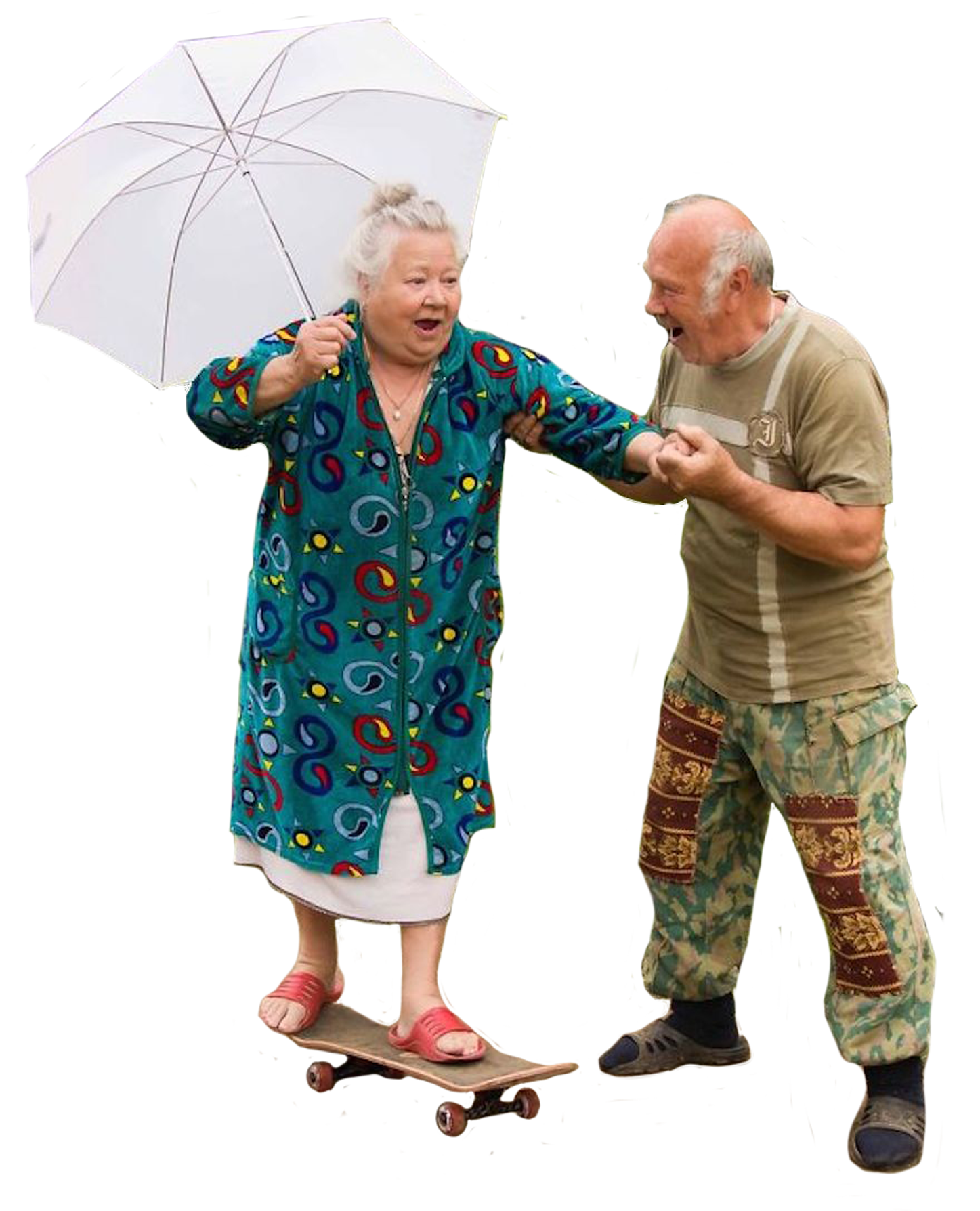
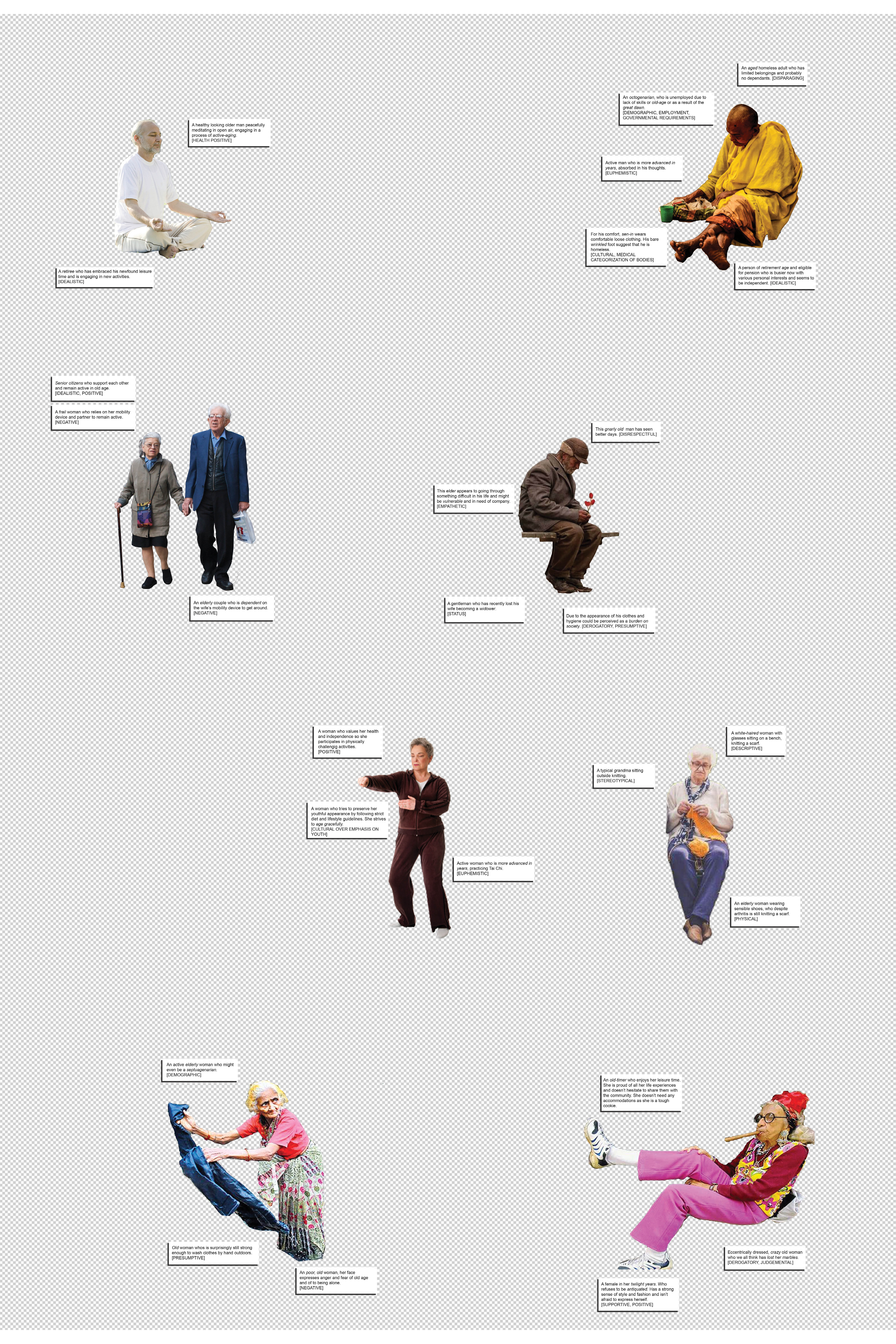
Ex.2 Embodying Umwelts
Aging modifies the human body through an often subtle process that alters stamina, strength, and ability. With increased age comes a heightened risk of aging-associated diseases that further augment, shape and completely transform how individuals perceive and navigate their environment. Embodying Umwelts tasked students to research how a specific aging-associated conditions alters the physical abilities, sensory perceptions, and social interactions of an affected individual.
Students interpreted their research to imagine how older adults with differing abilities might perceive and navigate the environment through the construction of an umwelt representation. The exercise extends German biologist Jakob von Uexküll’s concept of umwelt—in which organisms occupy a subjective phenomenal world unique to each species—to speculate on heterogeneous human perceptions. Together, the series of umwelts attempt to embody the different experiences of people as they move from the platform of University Station through South Campus and into a classroom in Hayes Hall. While it is impossible to accurately represent the perceptual worlds of diverse individuals, the exercise challenged students to multiply the perspectives through which they contemplate the built environment and explore alternative modes of representation to convey the perceptual world of another.
Work by ARC 491/591 Multiplying Perspectives seminar students: Emma McAneny, Euychan Jeong, Habiba Abdellal, Lauren Kennedy, Rachel Mordaunt, Tiffany Fong
Students interpreted their research to imagine how older adults with differing abilities might perceive and navigate the environment through the construction of an umwelt representation. The exercise extends German biologist Jakob von Uexküll’s concept of umwelt—in which organisms occupy a subjective phenomenal world unique to each species—to speculate on heterogeneous human perceptions. Together, the series of umwelts attempt to embody the different experiences of people as they move from the platform of University Station through South Campus and into a classroom in Hayes Hall. While it is impossible to accurately represent the perceptual worlds of diverse individuals, the exercise challenged students to multiply the perspectives through which they contemplate the built environment and explore alternative modes of representation to convey the perceptual world of another.
Work by ARC 491/591 Multiplying Perspectives seminar students: Emma McAneny, Euychan Jeong, Habiba Abdellal, Lauren Kennedy, Rachel Mordaunt, Tiffany Fong
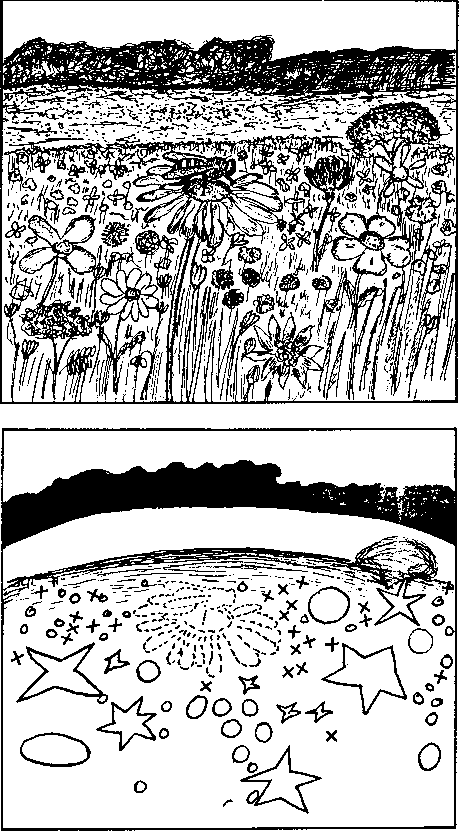
Comparative Umwelts of
Bees and Humans from Jakob von Uexkull’s
“A Foray into the Worlds of Animals and Humans”
Bees and Humans from Jakob von Uexkull’s
“A Foray into the Worlds of Animals and Humans”



